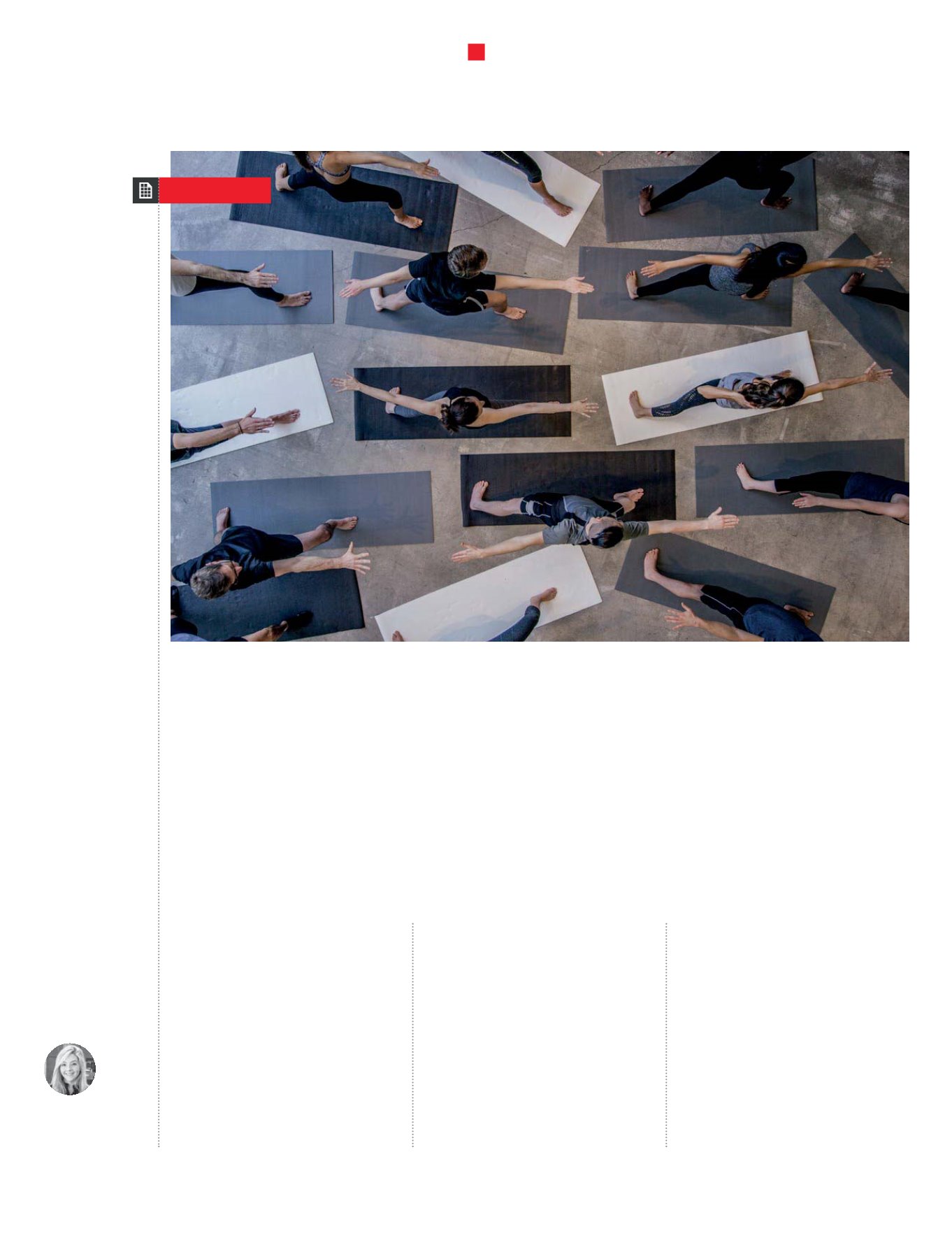

C
onsequently the workplace of
the (not too distant) future may
look radically different for some, as
employers respond to a growing
requirement for a work-health
balance. The wellbeing industry
already has a global footprint, but
most corporates and property owners
are still at the start of a journey
to understand and interpret the
implications for the built environment.
Most of us currently work in
what are essentially ‘unwell’ offices.
Workplaces that are not ‘well’ impair
employee performance and promote
heightened absenteeism and loss
of earnings. Mounting evidence all
points in one direction: wellbeing in
the workplace is fast becoming a
strategic imperative.
So what is driving this change
now? Technology has been identified
as a culprit in eroding work-life
boundaries. However, technology
tends to be a facilitator rather than
a driver. It in fact has a positive role
to play in empowering employees
to change the nature of their work
contract. Employees will increasingly
choose where they want to work
and how they want to work.
Technological progress has also
created greater transparency and
openness. It is allowing us to lay bare
and quantify the relationship between
‘where we are’ and ‘how we are’.
In doing so it allows us to redefine
how we work and how we measure
the output from our efforts. In turn it
should also create new ways for us to
determine the value added
proposition of excellent real estate.
In the following pages, we explore
the role of the well workplace in
driving real estate value.
TheWell Work Place
The nature of how we work has been changing at an accelerated
rate over recent years. Frontier firms have been quick to recognise
the important influence that the workplace has on their ability
to execute new working practices. However, this is no longer the
domain of a few big tech companies – the ‘well workplace’ is now
a mainstream concern.
By Sophy Moffat,
Associate Director,
Research & Insight
COVER STORY
03
COVER STORY
CUSHMAN & WAKEFIELD


















